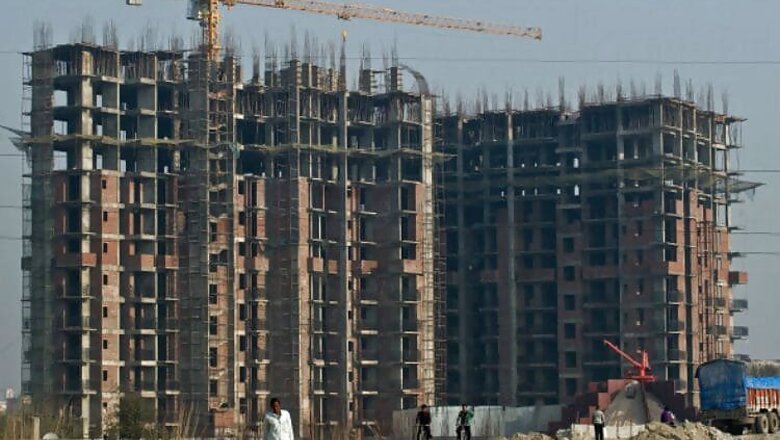
views
DHFL welcomes the steps government is taking to ensure “Housing for All by 2022” and develop smart cities. The schemes and policies that are implemented by entities including HUPA, HUDCO and NHB at the center and various authorities at the state level will promote development of houses for the EWS and LIG categories which have largely been left out earlier. Credit risk guarantee for home loans up to Rs 5 Lakhs, project finance for affordable housing developers and refinance for housing finance companies by The National Housing Bank is also significant in this context.
1. Strategic initiatives for further impetus -Success of the Housing for All by 2022 scheme will depend on investment in the affordable housing projects and timely execution of such projects. It is therefore imperative for the government to consider extending infrastructure status to Housing and Real Estate Sector. This will enable them access to funding from banks and other financial institutions at a much lower cost. DHFL also recommends formation of a nodal agency to coordinate efforts of various stakeholders and ensure faster decision-making.
2. Make strategic investments- Housing for all by 2022 requires development of about 11 crore housing units and this will need investment of more than USD2 trillion. This translates to about USD250 to 260 billion annually, more than double the annual investments witnessed in FY14. We recommend exploring PPPs as an alternative additional source of funding to infuse higher funding in urban housing. It will also facilitate introduction of private sector technology and innovation in providing better public services through improved operational efficiency.
3.Simplify structural and procedural framework - For long, the growth of India’s affordable housing segment has been hampered by many procedural and policy related challenges, the most important among them being the delay in approvals which escalates project development costs. It is therefore imperative to empower urban local bodies to expedite the process at local level. Single window clearance mechanism for affordable housing projects with faster turnaround time should also be implemented besides making available advanced technology which will lead to low cost with faster completion of the affordable projects.
4.Introduce legal and regulatory reforms – Modification in FSI / FAR / density norms especially from EWS / LIG housing perspective has been hanging fire for long time. Optimal FSI / FAR / density norms will help in reducing costs per unit and increase the economic viability of Affordable Housing. FSI can also serve as a cashless subsidy, the benefits of which can then be passed on to end users/customers. Rental housing should also be promoted to meet the grand vision of Housing for All by 2022.
5.Empower the consumer for greater affordability - Priority Sector Lending (PSL) should be redefined as for now only housing loans below Rs 25 Lakhs in metros qualify for PSL. DHFL is of the view that limit of the PSL should be increased to Rs 35 lakh and the annual increase be automatically pegged to the WPI will empower customers and incentivize HFCs to lend to affordable housing projects thereby giving boost to the real estate sector.
Fees and taxes should also be rationalized to reduce housing cost as taxes and fees account for 30 - 35% of housing cost. Reducing this burden could enable developers to provide cheaper houses.
6.A.To further improve financial inclusion through HFCs – Housing finance companies providing credit to low-income customers and grant credit to affordable housing are an important part of the financial ecosystem and help a previously excluded set of people to participate in the mainstream financial system. We recommend the following steps to help them work towards the cause of financial inclusion more effectively.
a.Refinance to HFC’s – Given that HFC’s operate at a higher cost structure, these companies should be permitted to offer loans at a higher spread, for better operational viability. Steps should also be taken to bring about a level playing field between private HFCs and universal banks. NHB could work with RBI to regulate, develop and meet the capital requirements of HFCs so that the purpose of disbursing finance at an affordable rate for housing can be achieved instead of just growing outstanding loan book.
HFC’s currently do not carry any tax benefits on the Fixed Deposit unlike Bank FD’s which enjoy tax benefit under Section 80C of the Income Tax Act for FD’s of 5 year tenure. We recommend extending such benefit to HFC’s to bring them at par with Banks.
b.As HFCs serve both serve formal and informal low-income customers, we recommend leveraging these firms catering to LMI customers to disburse interest subsidies. Government could also consider bringing parity in norms for both HFCs and Universal banks for disbursing funds.
c.The credit risk guarantee trust fund ensures that the loan amount, not exceeding Rs. 5 lakh per loan, shall be made available both new or existing individual borrowers from the economically weaker sections (EWS) and LIG without any collateral and/or third party guarantees. As per the scheme, loans can be taken for purposes of home improvement, construction, acquisition and purchase of new or second hand dwelling units of size up to 430 sq. ft. carpet area. We recommend enhancing this limit from the current Rs. 5 Lakhs to ensure easy access to funds to LMI customers and ensure affordable housing to them.
(Author Harshil Mehtais CEO, DHFL. The views in the article are personal, not that of CNN-IBN/IBNLive)



















Comments
0 comment